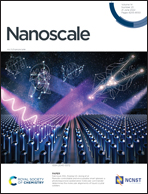Prediction of 2D IV–VI semiconductors: auxetic materials with direct bandgap and strong optical absorption†
Abstract
Auxetic materials are highly desirable for advanced applications because of their negative Poisson's ratios, which are rather scarce in two-dimensional materials. Motivated by the elemental mutation method, we predict a new class of monolayer IV–VI semiconductors, namely, δ-IV–VI monolayers (GeS, GeSe, SiS and SiSe). Distinctly different from the previously predicted IV–VI monolayers, the newly predicted δ-MX (X = Ge and Si; M = S and Se) monolayers exhibit a puckered unit cell with a space group of Pca21. Their stabilities were confirmed by first-principles lattice dynamics and molecular dynamics calculations. In particular, all these MX monolayers possess a large bandgap in the range of 2.08–2.65 eV and pronounced anisotropic mechanical properties, which are demonstrated by direction-dependent in-plane Young's moduli and Poisson's ratios. Furthermore, all these 2D MX monolayers possess negative Poisson's ratios (even up to about −0.3 for SiSe). Strong optical absorption is observed in these δ-IV–VI monolayers. These interesting physical properties will stimulate the development of 2D flexible devices based on IV–VI semiconductor monolayers.

- This article is part of the themed collection: Nanoscale 2023 Lunar New Year Collection


 Please wait while we load your content...
Please wait while we load your content...